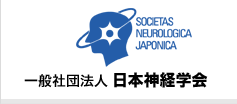Original Article
The handkerchief guide: a simple and practical method to improve ataxic gait in cerebellar subjects
Kiyomi Nagumo, M.D.1)*, Yumiko Kunimi2), Susumu Nomura2), Masatosi Beppu2) and Keizo Hirayama, M.D.3)
*Corresponding author: Department of Neurology, Ushioda General Hospital〔1-6-20 Yako, Tsurumiku Yokohama City, Kanagawa Prefecture 230-0001〕
1)Department of Neurology, Ushioda General Hospital
2)Department of Rehabilitation Engineering, Kanagawa Rehabilitation Hospital
3)Department of Neurology, Chiba University School of Medicine
Objective: Ataxic gait can be remarkably improved by a simple method called the "handkerchief guide" involving the patient and caregiver holding opposite ends of a handkerchief and walking together. Our objective was to assess the effect of the handkerchief guide on gait in patients with cerebellar ataxia.
Methods: Gait analysis was carried out on seven patients with degenerative cerebellar disease (DCD), seven patients with unilateral cerebellar vascular disease (CVD), and seven healthy control (HC) subjects. All subjects performed two walking tasks: free walking (FW) and handkerchief-guided walking (HGW) on a 10 m pathway. In the HGW condition, each subject walked with the caregiver while maintaining slight tension on the handkerchief. The HCs and patients with DCD held the handkerchief with their right hand, while the patients with unilateral limb ataxia due to CVD grasped it with their affected and unaffected hands in different trials. We measured 10 gait parameters.
Results: The HGW attenuated body-sway, lengthened step, and increased gait velocity in patients with cerebellar ataxia. In DCD, the HGW significantly improved seven parameters. In CVD, HGW with the affected hand improved five parameters, and HGW with the unaffected hand improved seven parameters.
Conclusions: The HGW stabilized upright posture in patients with cerebellar ataxia during level-ground walking, probably by enabling subconscious postural adjustments to minimize changes in the arm and hand position relative to trunk, and in arm configuration. This led to improvement of gait performance. The handkerchief guide may be useful for walk training in patients with cerebellar ataxia.
Abbreviations: COM, center of mass; COG, center of gravity (projection of the COM onto the ground plane); COP, center of pressure; CVD, cerebellar vascular disease; DCD, degenerative cerebellar disease; FW, free walking; HAT, head, arms, and trunk segment; HC, healthy control; HGW, handkerchief-guided walking.
Full Text of this Article in PDF (1364K)
(臨床神経, 55:311−319, 2015)
key words:stroke, gait ataxia, spinocerebellar ataxia, posture, rehabilitation
(受付日:2014年6月17日)






